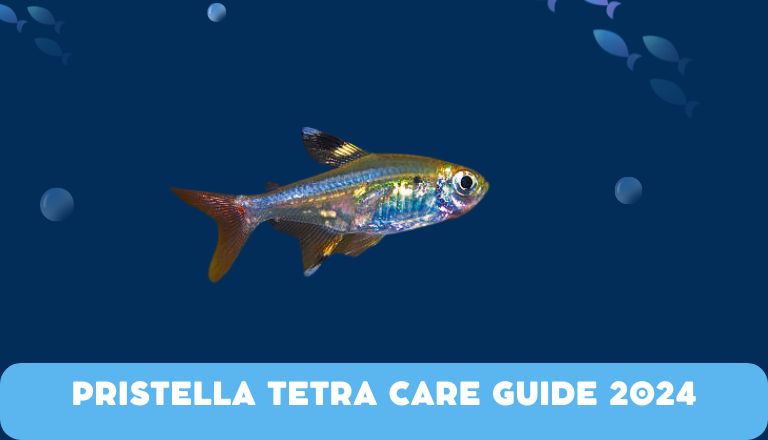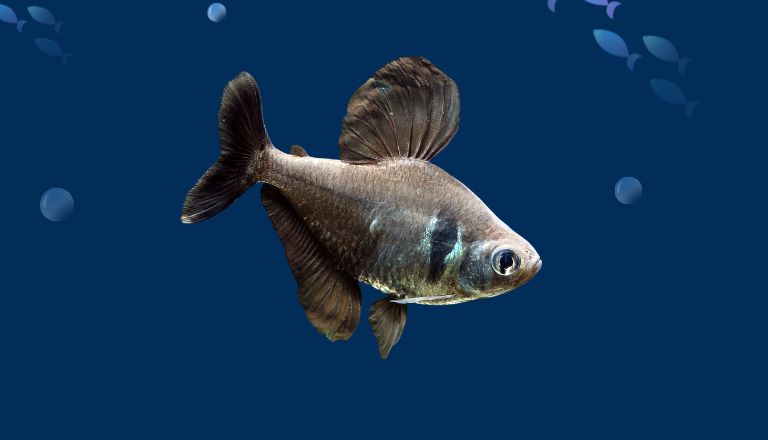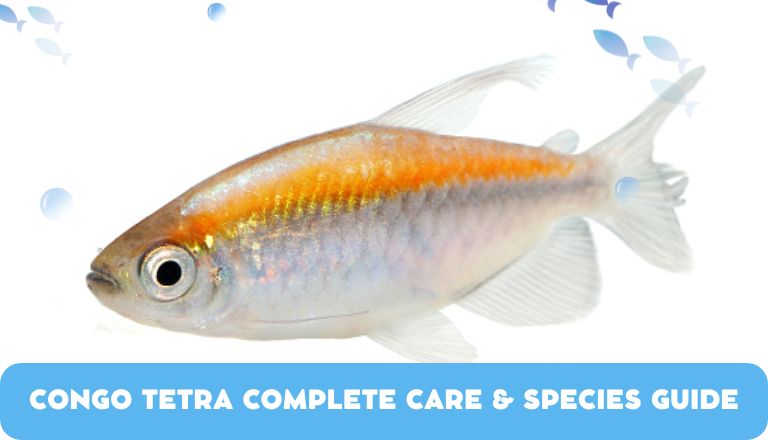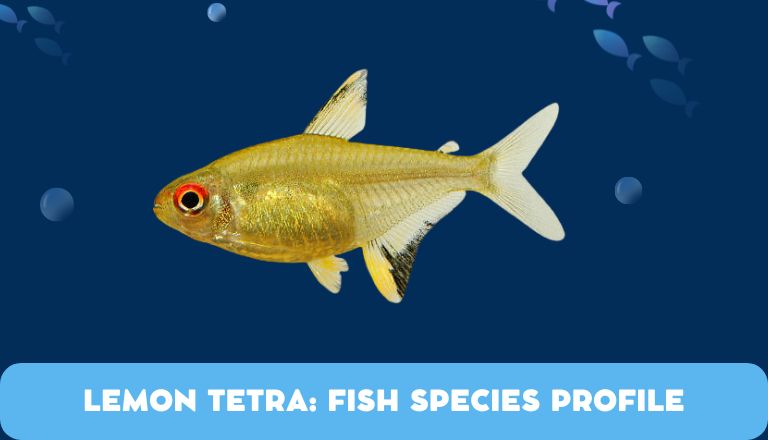Emperor Tetra Fish Species Profile
If you’re a fish enthusiast or looking to add some vibrant life to your aquarium, the Emperor Tetra is a perfect choice for you. They have striking colors and a lively personality. These fish are beautiful and easy to care for.
In this Emperor Tetra Fish Species Profile, we’ll dive into the fascinating world of these fish and explore their natural habitat, behavior, and care requirements.
Emperor Tetras are known for their shimmering blue bodies with hints of yellow and iridescent scales. These social fish thrive in groups and enjoy swimming around plants and decorations in a well-maintained tank.
This guide will provide compact information to create a thriving environment for these Tetras. Join us as we uncover what makes them so captivating!
Emperor Tetra Facts & Overview
The Emperor Tetra is scientifically known as Nematobrycon palmeri. It is a small and striking fish. They typically reaches an adult size of about 2 inches (5 cm). This species showcases a blend of shimmering blue and iridescent shades. Emperor Tetra has a peaceful nature and thrives in community settings.
Emperor Tetra has a life expectancy of around six years when kept in optimal conditions. They need soft, acidic water and plenty of plants for cover and swimming space to mimic their natural habitat. Their energetic movements and social behavior are captivating to observe. They swim in schools which enhances their stunning appearance.
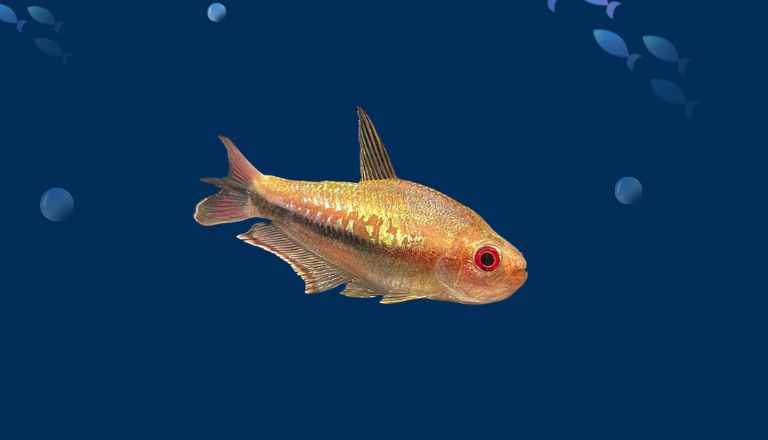
Characteristics
| Family | Characidae |
| Origin | Colombia |
| Social | Peaceful |
| Tank Level | Mid dweller |
| Minimum Tank Size | 10 gallons |
| Diet | Omnivore, eats most foods |
| Breeding | Egg layer |
| Care | Intermediate |
| pH | 5.0 to 7.8 |
| Hardness | to 25 dGH |
| Temperature | 73 to 81 F (23 to 27 C) |
Origin and Distribution
The Emperor Tetra is a native to the lush, tropical waters of Colombia’s Atrato and San Juan River basins. These rivers are known for their slow-moving tributaries and streams and provide an ideal habitat where temperatures comfortably hover between 73 to 80 degrees Fahrenheit. This specific environment supports the Tetra’s well-being.
Emperor’s stunning appearance makes it popular among aquarium enthusiasts. The International Union for Conservation of Nature (IUCN) stated in 2014 that there isn’t enough information to fully assess the conservation status of the Emperor Tetra.
Color and Markings
The Emperor Tetra is popular among aquarium lovers because of its bright colors and unique markings. Since it was introduced to home aquariums in 1960, many people have chosen this fish. Both male and female Tetras fins are bright yellow with black edges. This color contrast makes them attractive.
Their bodies have a striking blue-gray color, highlighted by soft mauve shades that make them shiny. A dark stripe runs from head to tail and creates a strong contrast with their lighter belly. This coloring adds beauty to the environment. Keep them in groups to enhance their colors as they interact.
Tankmates
When choosing tankmates these Tetras, prioritize their peaceful nature and social behavior. Suitable tankmates for Emperor Fish include small, non-aggressive fish like Neon Tetras, Corydoras Catfish, and certain Rasboras. These species share similar water requirements, thrive in community settings, and contribute to a vibrant aquarium environment without causing stress among the tetras.
Avoid larger or aggressive fish that might scare or hurt your fish. Cichlids and large barbs can be a threat because they are territorial. Add bottom dwellers like Kuhli Loaches to create fun interactions and to keep the tank peaceful. Add plenty of plants and hiding spots. This will give your fish safe places to retreat when they need a break from each other.
Emperor Tetra Habitat and Care
The Emperor Tetra lives well in slow rivers and streams in the Amazon basin. To create a similar home for them, set up a well-planted aquarium with many hiding spots. A tank of at least 20 gallons is best for a small group of these active fish. Use soft, slightly acidic water with temperatures between 75°F and 82°F. Add driftwood or leaf litter to shelter them and make the tank feel like their natural habitat.
Caring for Emperor Tetras needs careful attention. They do best with a varied diet. Keep their water clean with regular water changes to keep them healthy. Avoid putting aggressive fish in the tank. By creating a natural-like environment and providing proper food and care, your fish will happily thrive in your aquarium!
Emperor Tetra Diet and Feeding
Emperor Tetras are omnivorous fish. They thrive on a varied diet. In the wild, they consume small insects, crustaceans, and plant matter. To replicate this balanced diet at home, feed them high-quality flake food or pellets specifically designed for tropical fish. Supplement their meals with frozen or live foods like brine shrimp and bloodworms to enhance their color and provide essential nutrients that contribute to their health.
Feed them small amounts of food two to three times a day. Overfeeding can harm water quality and stress other fish. Watch how they eat; if they ignore food or leave leftovers, reduce the portion size. Offer a variety of foods to keep them interested. Occasionally, they add blanched vegetables like spinach or zucchini for extra fiber and a change in their diet.
Gender Differences
There are a few key visual cues to differentiate between males and females Emperor tetra. Males typically exhibit more vibrant colors, showcasing striking cobalt blue and orange highlights on their fins and body. Their overall size is also generally larger than that of females. Females have softer colors and less noticeable markings.This difference shows their roles in nature and excites their mating displays.
Males and females of the species have different body shapes. Males have longer, thinner fins, while females have shorter, rounder fins. During the breeding season, males often show brighter colors to attract mates.
These differences keep a balanced aquarium. By knowing these traits, you can make better choices when picking Emperor Tetras for looks or breeding.
Breeding the Emperor Tetra
Breeding Emperor Tetras requires careful attention to their environment and diet. Set up a separate breeding tank with soft, slightly acidic water (pH 6.0-7.0) and a temperature between 74°F and 78°F (23°C to 26°C). Use fine-leaved plants such as Java moss or spawning mops to provide hiding spots for the eggs. Keep the breeding pair in a group to pick their mates and deeply reduce stress during the spawning process.
Feed your breeders high-quality foods like live brine shrimp, daphnia, or specialized tetra flakes to enhance their readiness to spawn. The female will lay around 100 eggs on plants or substrates, which usually hatch within 24-36 hours. After hatching, remove the parents from the tank to prevent them from eating their young.
The fry can begin feeding on finely crushed flakes or infusoria once they absorb their yolk sacs, typically around five days post-hatching.
Conclusion
Emperor Tetra is a stunning addition to any freshwater aquarium, known for its vibrant colors and peaceful nature. This species thrives in well-planted tanks with plenty of swimming space and prefers slightly acidic water conditions. They are easy to care for which makes them suitable for both beginners and experienced aquarists.
With their social behavior, Emperor Tetras do best in schools of six or more and promote a lively environment in your tank. If you want to enhance your aquarium’s beauty and enjoy watching these charming fish interact, add Emperor Tetras to your aquatic community today!
FAQs
How big do Emperor Tetras get?
Emperor Tetras typically grow to about 1.5 to 2 inches in length when fully mature. These fish are popular in aquariums due to their vibrant appearance and peaceful nature. They thrive in groups and prefer a well-planted tank with gentle water flow.
Which Tank mates are suitable for Emperor Tetras?
Emperor Tetras can be kept with peaceful fish like Corydoras catfish, Neon Tetras, and Guppies. They thrive in community tanks with similar-sized, non-aggressive species that share their water conditions. Avoid larger or aggressive fish, as they may stress the Emperor Tetras.
Are Black Emperor Tetras Aggressive?
Black Emperor Tetras are generally peaceful fish and are not considered aggressive. They do well in community tanks with other non-aggressive species. However, they can show territorial behavior if kept in small groups or overcrowded conditions, so keep them in schools of at least six to minimize any potential stress or aggression.
Do Emperor Tetras Eat Shrimp?
Yes, Emperor Tetras can eat shrimp, but choose the right size and type. They may nibble on smaller shrimp or baby shrimp, but larger adult shrimp are usually safe as they are not seen as prey.
What is the lifespan of an Emperor Tetra?
The lifespan of an emperor tetra typically ranges from 5 to 6 years when kept in a well-maintained aquarium. These small, colorful fish thrive in stable water conditions and a balanced diet, to live longer. Proper care is essential for maximizing their lifespan.



